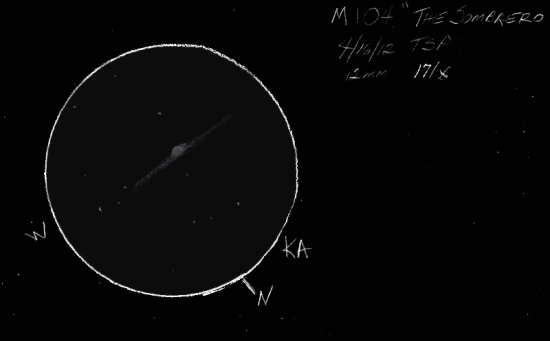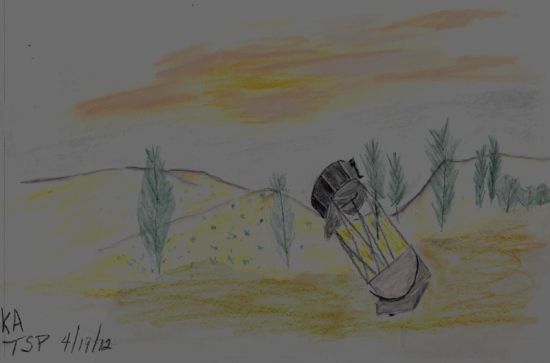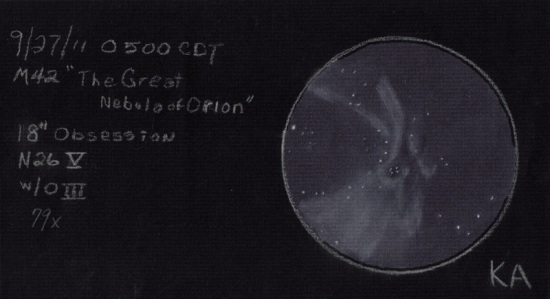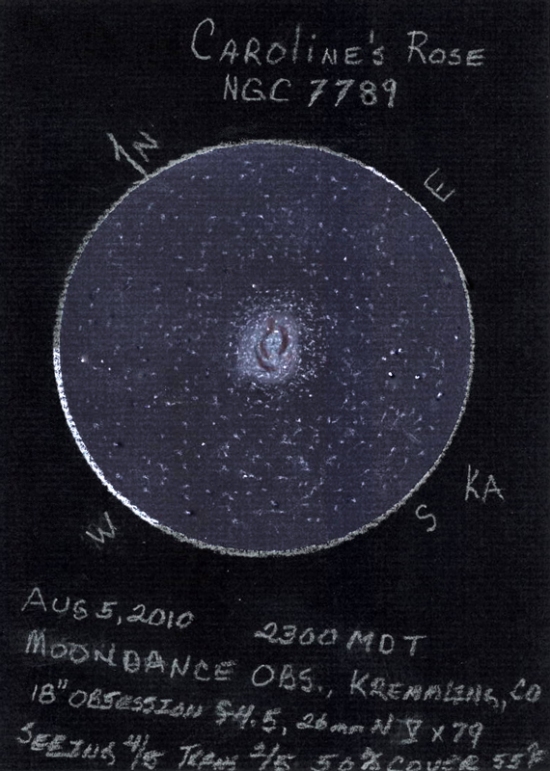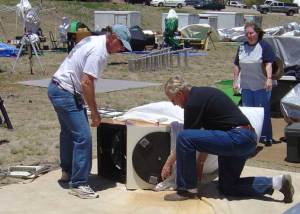A Visit to Keck Observatory
May 14, 2017 at 4:14 pm | Posted in Uncategorized | Leave a commentMy wife, Deb, and I made a visit recently to Hawaii (the big island) and had the opportunity to visit and tour the W. M. Keck Observatory on Maunakea, Hawaii. W. M. Keck Observatory Our visit was in early March, 2017.

This was a special treat because Keck does not offer public tours. This tour was arranged through the good offices of Christopher Erickson, a friend I had only met here on Cloudy Nights. I got to meet Christopher on this trip and am so glad I had that opportunity. Like others on Cloudy Nights that I have eventually met face to face, he is a genuine good guy.
I contacted Christopher and ask if he knew how I could arrange a tour of the observatories on Maunakea. Christopher is an observatory engineer. He said he’d try to put something together. He orchestrated the best observatory tour I’ve ever had anywhere, ever! Christopher convinced his friend, Josh Walawender, who is a support astronomer at Keck, to help us out. Josh was a generous and engaging host. He gave us his entire day. Our group was composed of my wife Deb, Roland Christen, Ty Yun, Christopher, Josh and myself.
We gathered at Keck Headquarters in Waimea. Josh gave us a tour of that facility and his office there. Part of the work of Headquarters is to facilitate remote observations from the nearby summit of Maunakea. A lot of the scientific work is accomplished here. There are mirror control rooms on the summit and at Headquarters. This is the one at the summit.
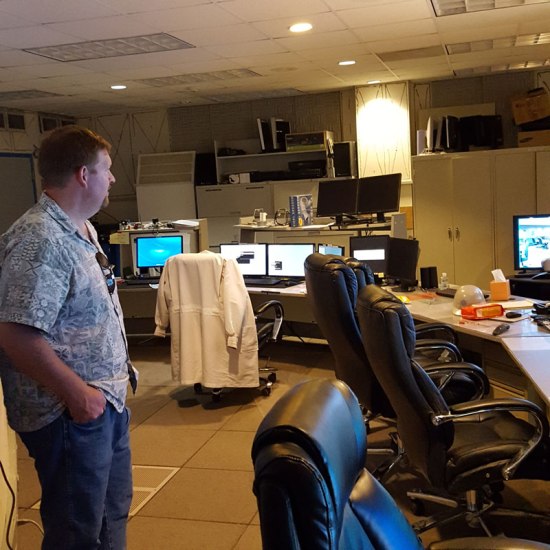 (photo credit Ty Yun)
(photo credit Ty Yun)
We also got to see some of the mementos of Keck triumphs. An interesting feature of the Headquarters facility is an open courtyard with grassed area that are the shape and size of the 10 meter mirrors. When the shape and size of the mirror is laid out next to familiar objects the marvel of a 10 meter mirror becomes a little more real. It is a very different view than the actual mirror surrounded by all the supporting structure.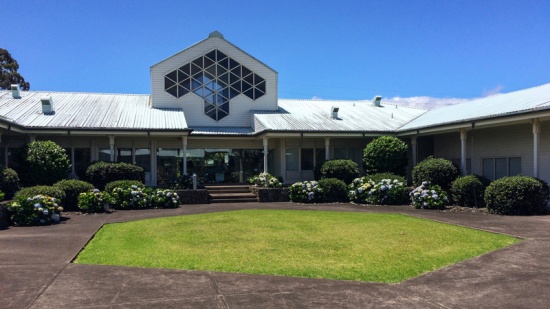 (photo credit Josh Walawender)
(photo credit Josh Walawender)
After touring Headquarters, we went to the Onizuka Center for International Astronomy Visitor Information Station, on the south slope of Maunakea.
 (photo credit Ty Yun) (Left to right: Knuklhead, Deb, Josh, Roland and Christopher.)
(photo credit Ty Yun) (Left to right: Knuklhead, Deb, Josh, Roland and Christopher.)
Ty took the photo and I don’t want him to feel left out, so here’s his selfie.
 (photo credit Ty Yun)
(photo credit Ty Yun)
The Visitor Information Station is at 9,200’ and about 2/3rds of the way up the road to the summit. The Visitor Information Station has a gift shop that also offers food. There are picnic tables. It was our stop to make sure that our bodies had a chance to acclimatize to the altitude and we learned about pressure breathing. The summit is 13,900’. At that altitude, the partial pressure of oxygen is “noticeably” reduced. If you go, this is something to bear in mind and be prepared. Deb and I live at 6,000 feet. We are active at 12,000 feet, regularly. Even though we have an easier time acclimatizing to altitude, we were grateful for the time at the Visitor Information Station. My best tips: wear lots of sun screen, drink plenty of water and learn to pressure breathe. I suspect that the altitude is a primary reason that the observatories do not conduct regular public tours at the summit. It would be a major undertaking just to provide the necessary health support to a large public group.
The Visitor Information Station is worth a night time visit on its own. There is a regular free public observation event. Maunakea Star Gazing Program The telescopes available for public observation include some of the finest instruments I have ever seen at any amateur event, much less a public event. The volunteers who conduct the program are very knowledgeable and extremely patient. Plan ahead to arrive early. Parking is limited and the observing deck fills quickly.
After our picnic, at the Visitor Information Station, we continued to the summit and the observatory.

Inside our first stop was the mirror maintenance facility. The Keck was the first telescope to develop and install segmented mirrors. The Keck telescopes are also able employ adaptive optics. My own take on the usefulness of adaptive optics is that it allows an earthbound mirror to be “virtually” lifted above Earth’s atmosphere. It is impressive technology.
Each of the Keck mirrors is composed of 36 hexagonal mirror sections. The segments maintain alignment by use of active optics. Sections are regularly rotated off, three at a time, as each section is taken off the telescope it is replaced by a freshly recoated section from the “mirror barn”. The mirrors are stripped and recoated on the summit. History and More Information In the mirror recoating facility we were able to see the steps in that process. We were also able to see the actuators on the “back” of the mirror sections; that make the active optics work.
(photo credit Ty Yun)
We then went to a small alcove, where we could see into the dome.

(photo credit Ty Yun).
Some work was being done in the dome. When that work was done, we were fitted with hard hats and admitted inside the dome!
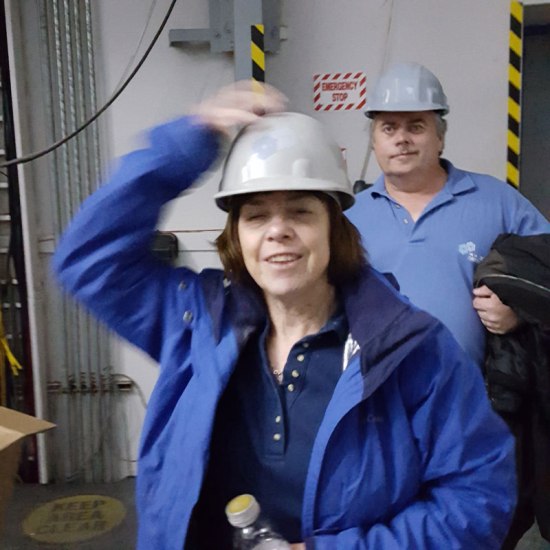 (photo credit Ty Yun)
(photo credit Ty Yun)
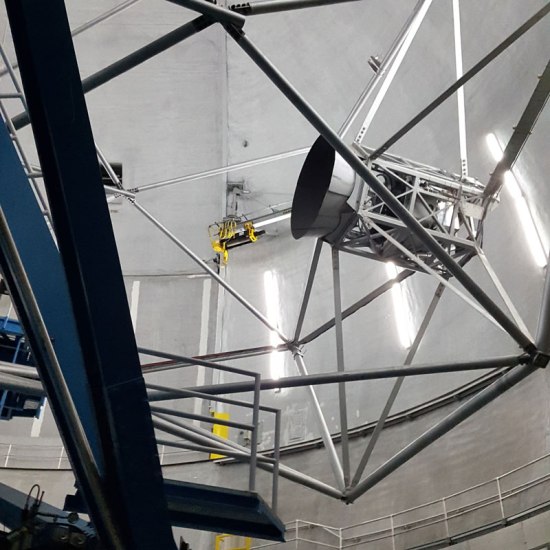 (photo credit Ty Yun)
(photo credit Ty Yun)

Me, being Knuklhead, here is a photo of me with my hand on the secondary mirror housing of Keck I.
I haven’t washed that hand since. I’m also told that the heat signature of my hand remained and screwed up all observations for days subsequent.
I sure you’ve heard about “mountain top experiences”, well this is one of mine, figuratively and literally. Many thanks to Christopher and Josh.
Texas Star Party 2012
November 5, 2013 at 8:02 pm | Posted in Observing Report | Leave a commentThe 2012 Texas Star Party was one for the history books. Every night was observable and, for the most part, exceptionally so. Every night was clear and dry with good transparency. I thought the seeing was always good and occasionally excellent. However, I find that I may not be the best at evaluating either transparency or seeing. I didn’t hear complaints, though. The Observing List challenges were, well challenging and, fun. The fellowship was a wonderful as always. Some personal observing highlights were: M38 that looks, to me, more like a Starfleet badge than a starfish; jewel toned stars in M47; Markarians chain; NGC6946, the fireworks galaxy; and NGC6543, with blue-green color.
Here are the observing notes and some of the sketches
Okie -Tex 2011
October 14, 2011 at 3:46 am | Posted in Observing Report | Leave a commentThis was my major star party for this year. The weather was not as perfect as it has been in past years. Every night was plagued with bands of clouds that seemed to materialize directly over the observing field and take a good while to dissipate. I’m sure it drove the imaging folks wild. It didn’t have as much of an effect on the visual observers. I was particularly pleased with my sketches of the Great Nebula of Orion and the Veil. I think I’ve made some progress in two years.
Here is the observing report and the sketches.
Ed’s Place August 27, 2011
October 14, 2011 at 3:25 am | Posted in Uncategorized | Leave a commentEd’s Place is the Edmund G. Kline Dark Sky Site belonging to the Denver Astronomical Society. Even though it is plagued by light pollution, the whole Western half of the sky dome is washed out, it is serviceable for observing to the East. And, it is close enough to Denver for a single evening of observing.
Here is the evening’s observing report and a sketch.
WUTS (Weekend Under the Stars) 2011
October 8, 2011 at 9:18 pm | Posted in Observing Report | Leave a commentThis remains one of my favorite star parties. I enjoy it mostly because of its laid back attitude. It’s sponsored by the Laramie and Cheyenne, Wyoming Astronomical Societies. There is no pre-registration. They don’t sell you a T-Shirt, anymore. Though the last couple, a few years back, were collectors items in their eccentric humor. I renew friendships first formed at past WUTS every year. The mood of the event just suits me.
This year the weather, while serviceable for observing, was not as good as in some past years. There have been some nights at past WUTS that were absolutely perfect. The sky can be severe clear here. Often the seeing and transparency are as good as they can get. There is little light pollution.
I would have to say that the highlights of this years event for me was the Supernova in M51 and “The Emerald”. I attempted sketches of both. Anyway, here is the observing report.
And, here are some sketches made at WUTS 2011
Okie-Tex 2010
October 26, 2010 at 12:52 pm | Posted in Observing Report | Leave a commentWe had five good nights at Okie-Tex this year. A couple of the nights were better than just good. On the last evening the sky was overcast shortly after dark. By then the scopes were already packed away, in anticipation of the required early departure the next morning. I worked on my sketching almost every night. There was wind that kept me from sketching at times. But, I even attempted a sketch on the last night, just before the overcast arrived. I attempted a widefield sketch of the Milky Way ascending over a picturesque ridge line to the South. I’m still working on that sketch.
This was the first star party that I have attended by myself. Before, there has always been someone that either went with me or that I planned to meet and camp with. This time I had no idea who might be there and had no one that I would be camping with. Before I left, I was concerned that the absence of any of my usual star party companions would result in a less satisfying experience. The social aspect of star parties is an important one. I needn’t have been concerned. Many friends I had met the previous two years at Okie-Tex were back. It was great to renew those friendships. New friends, that I met for the first time earlier this year, at the Texas Star Party, were there. Then, and this is almost always the case at any star party, I met new friends. When you get down to it, the community of amateur astronomers is really not all that big and it’s pretty easy to form a new friendship based upon a known shared interest.
Here are the observing reports and some of the sketches. You may be interested to compare the sketch of M31 and M110 to the sketch of M31 that I made a year ago. The comparison shows that I have made some progress with my sketches.
Click on the link for the observing reports. Click on any of the sketches to see a larger version. I hope you enjoy them.
Weekend Under the Stars at Bernie’s
August 11, 2010 at 4:37 am | Posted in Observing Report | Leave a commentAugust 4 – 8, 2010
“Weekend Under the Stars”, WUTS, sponsored by the Laramie and Cheyenne Astronomical Societies at Foxpark, Wyoming for the last 20 years, was cancelled this year. It was cancelled on short notice because the Foxpark site was suddenly pre-empted by the Forest Service. They needed that open meadow as a staging area for pine beetle mitigation. WUTS has always been one of my favorite star parties. It is very relaxed and informal. The same good friends return year after year. I look forward to retuning next year. But, for this year, WUTS became BUTTS (Bernie’s Under The Twinkling Stars).
In the face of the last minute cancellation my closest observing friends and I searched out an alternative. We thought about going to the Nebraska Star Party. But, it was a long drive and we hadn’t allowed enough time on our calendars. We checked out sites in the Pawnee National Grasslands that would have been reasonably dark but not as dark as Foxpark. We also thought about going to Starpoint Observatory at Clayton Lake State Park, New Mexico. There skies are as dark as the Okie-Tex Star Party. That is because Starpoint is only about 30 miles from the Okie-Tex site. The forecast looked especially favorable for Starpoint. However, the driving distance to Starpoint tipped the balance in favor of accepting Bernie’s invitation to stay at his mountain home near Kremmling, Colorado, called Moondance. The sky conditions are very similar to Foxpark. There are a few house lights visible in the valley. But, Bernie’s is well above the valley floor and those lights. It is an excellent observing location. Bernie was a gracious host and we are most grateful to him for inviting us.
We had two good nights on Thursday and Friday. The highlight from Thursday was observing three transits of Jovian moons. Early in the evening there was a shadow transit by Ganymede. Later in the evening, Ganymede was visible passing across the disk with no shadow. Before Ganymede had completed its transit, Io began a shadow transit. Within an hour the disk of Io began to transit. Ganymede was still in transit. So, for a time you could see the two moons in front of the planet and Io’s shadow on the planet.
I was also able to get a sketch of an object I had been trying to get for sometime, Caroline’s Rose (NGC7789). It is named for its discoverer, Caroline Herschel. She was an 18th Century Astronomer and the sister of Friedrich Herschel, King’s Astronomer to George III. She was the first woman to be awarded a Gold Medal by the British Royal Astronomical Society, in 1822. No other woman was so honored until 1996, when Vera Rubin received the award. Caroline’s Rose is an open cluster of stars with some curving dust lanes in front of the core and some curved spaces between chains of stars further away from the core that suggest the petals of a rose.
Here is the link to my observing log:
Rocky Mountain Star Stare, June 10-12, 2010
June 13, 2010 at 1:56 pm | Posted in Observing Report | Leave a commentThis observing report is going to be a break in the usual pattern. I did not log any observations. I did not make any sketches. That’s because this observing report is about a new observer, our son, Sam. A log book full of notes and a portfolio of the finest sketches could not begin to match the joy of spending time with Sam under that black velvet sky slashed by a river of diamonds.
Sam is our youngest son. He graduated from Cornell College last month. He has a brief time at home this summer before joining the Episcopal Service Corps to work in the Micha project in Boston. Sam is the child that has always kept me laughing. He’s a joy to have around. I was somewhat surprised, though, that he accepted my invitation for the trip to Rocky Mountain Star Stare, near Gardner, Colorado. I attend this star party almost every year. It’s one that is near the top of my list. We have a small group of other astronomers that all camp and set up together. We have become close friends and enjoy each others’ company. I was praying for good clear sky and that Sam wouldn’t get too bored, hanging out with a bunch of old guys.
We got two nights of good sky. Sam fit right in with the old guys. He enjoyed my friends and they enjoyed him.
The first night I spent the first couple of hours showing Sam eyecandy. He also enjoyed going from scope to scope seeing what the others had to show him. As soon as somebody had something new in their eyepiece they would call for Sam to come have a look. I knew my friends would do this. That’s just the kind of people they are. But, I would be remiss if I didn’t acknowledge their effort to make Sam welcome. He got to see so many interesting and beautiful wonders.
After a short break, to let some clouds pass, I showed Sam how to use a star chart and how to look up descriptions of the objects in The Night Sky Observer’s Guide. He was off and running with my scope. A Dob with a Telrad and an ArgoNavis is really easy to point at objects. Pushing the scope around is intuitive. The Telrad and the computer make finding objects quick and rarely allow frustration. The rest of the evening I was relegated to my lawn chair waiting for Sam to say. “Hey, I found it, come see.” I was up and down a lot. We observed together until just before dawn. I realized that I was watching Sam get bit with the amateur astronomy bug, right before my eyes. He had a great time. I wouldn’t trade being able to watch him have so much fun for any number of log entries or sketches. Best of all, I got to hear Sam say: ” I understand why you enjoy doing this so much and why you like these guys so much.”
Families are made and fostered, in large part, upon memory. Sam and I put a beautiful memory in the family album this weekend.
Texas Star Party 2010
May 23, 2010 at 3:03 pm | Posted in Observing Report | 2 CommentsIt’s been a long time since I was so exhausted, but having so much fun I didn’t want to stop. This was a star party done large (and what were you expecting?) and right. They take over the whole of the Prude Guest Ranch near Ft. Davis, Texas, in Big Bend country. It is dark and they brook no white light, anywhere, after dusk.
Ft. Davis is 30°N latitude, so 12° more Southern sky is open as compared to my usual observing sites. That opens up a lot of objects in Hydra and Centaurus, including Omega Centauri (largest globular cluster in the Milky Way Galaxy), Centaurus A (known as the Hamburger Galaxy) as well as some things in the tail of Scorpius. An unexpected highlight was an impressive dark Nebula, Barnard 228, in Lupus. Dark Nebula are not usually very interesting to me, except where the partially occlude brighter objects. Barnard 228 is just so darn big. I had to sweep the eyepiece to its margins before I realized what it was.
I enjoyed sketching two examples of galaxies that have or are experiencing collisions, the Ring Tail and Centaurus A. I also sketched the Sombrero Galaxy (M104) and the Swan Nebula (M17). They actually look like their namesakes, to a remarkable degree. And, to a similarly remarkable degree, my sketches look like a Swan, a hat and a hamburger.
And here are Centaurus A and The Ringtail
I traveled with Gary Nielsen, Bernie Poskus and Mike Prochoda. All are good friends that I observe with regularly. I’m on the left. Next to me is Bernie. Next to Bernie is Mike. Gary is in the front.
On the way down from Denver to Southwest Texas, we traveled through Eastern New Mexico. As we did we listened to an audio book: The Authentic Life of Billy the Kid, by Pat F. Garrett, the legendary sheriff of Lincoln County. As we did, we passed through many of the places where the action of the book took place. We made an overnight stop in Roswell, New Mexico and took in the Roswell Museum and Art Center collection on Robert H. Goddard, the father of modern rocketry. Dr. Goddard did much of his research at Roswell. The Museum has a collection of his rockets, tools, shop and other items.
Dr. Goddard’s launch tower and a completed rocket are on the museum grounds.
After the sublime visit to the Goddard exhibit, we went to the riduculous International UFO Museum and Research Center.
We didn’t feel much like lunch after that, so we got back onto the road. We reached Ft. Davis by early evening. We checked in at The Prude Guest Ranch. Checking in a night before the Star Party began gave us a chance to scout the place out before the hordes descended. By the time we got there one car was already in line at the gate for entry the next morning. By the time we got up then next morning the line was very long. We didn’t claim a place ahead of anyone else. We waited until the first few cars were past us and fell in line with the rest. Here’s what the upper field looked like before Noon. 
And here’s what it looked like shortly after they started letting the cars through the front gate.
As you can see there were telescopes of every size and description. There were so many toys, some bought, some invented.
Here are some photos of each of us with our scopes.
Bernie looks a bit tired, don’t you think?
At dark the whole place transforms. The differences in the people and the equipment start to blur. It’s mostly quiet, and red:
The Observing Reports pinned at the top are the best record of the nights of observing. The days were spent mostly sleeping. I have to admit there are very few star parties where meals are provided. It was nice to have a dining hall, and the food was pretty good. There are even fewer where you have a motel room practically on the observing filed. Even with all that convenience, staying up from dawn to dusk for so many nights leaves you feeling pretty tired. So tired, Bernie and I fell asleep in the line for lunch.
On Tuesday, disaster threatened. There were very high winds, in the afternoon. Bernie’s scope got blown over. But, he kept his cool. None of the optics were damaged. There was some damage to the mount for his finder scope. We set about checking for damage, righting the scope and making repairs. By evening, Bernie’s scope was in full operation. The two people helping Bernie in the photo below are our new friends Roger and Donna Dillon. Texas’ reputation for friendly folks is well deserved.
We did make some afternoon visits to nearby observatories. One of the radio telescopes that forms part of the Very Long Baseline Array is within a few miles of the Ranch.
The University of Texas’ MacDonald Observatory complex is about 15 miles, by road, to the West. It’s also a couple thousand feet higher.
In all, it was an excellent star party and I look forward to going again, soon.
All Arizona Messier Marathon, March 13 -14, 2010
March 21, 2010 at 10:32 pm | Posted in Observing Report | Leave a commentI kicked off the 2010 Star Party season by attending the All Arizona Messier Marathon. The star party is held on a ranch near Arizona City, at a moderately dark site. It is named for the Messier Catalog of celestial objects that are not stars or comets. Charles Messier was an 18th Century French astronomer.
He was primarily interested in comets. In his research, he compiled a list of objects that he had determined were not comets, though they initially appeared so. That list became the Messier Catalog The Catalog has 109 or 110 objects, there is a continuing debate, and includes things like nebulas, galaxies, globular clusters and open clusters. At the New Moon in March, many astronomers try to observe the entire Catalog in a single night. I’m told it can be done.
For my part, I was just grateful that it gave the Saguaro and East Valley astronomy clubs a good excuse to throw a star party in the Springtime desert. I was able to attend because generous friends that I met online, through Cloudy Nights, were gracious hosts. They picked me up and drove me to and from the Star Party. They let me use their telescopes and in general made sure I enjoyed myself. I want to express my gratitude to all of them. (A link to the Cloudy Nights website is at the right.)
In addition to the conviviality of my friends, the highlights of the All Arizona Messier Marathon, for me, were the opportunity to observe Omega Centauri. I also got my first view of the “Owl” open cluster. I also made a sketch of M51 (object number 51 recorded in Messier’s catalog). Compare this sketch to the ones attached to earlier observing reports. I think I’m getting a bit better.
Blog at WordPress.com.
Entries and comments feeds.


